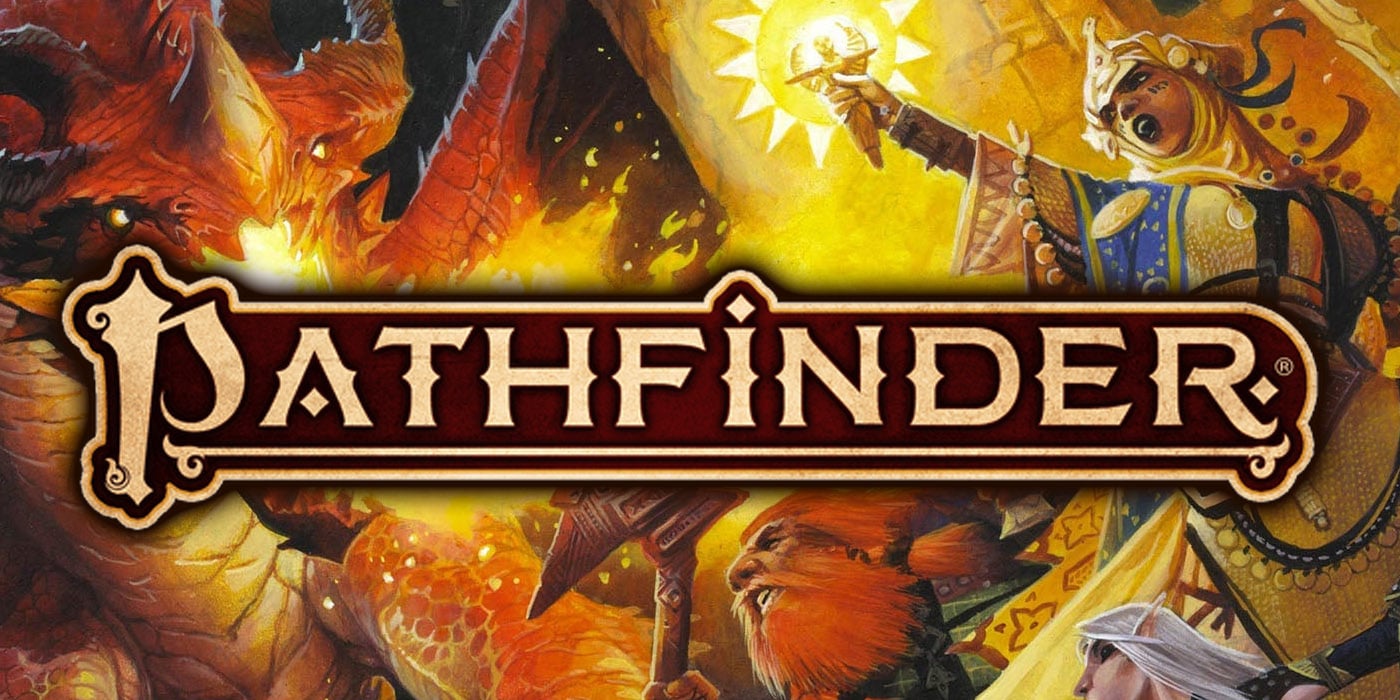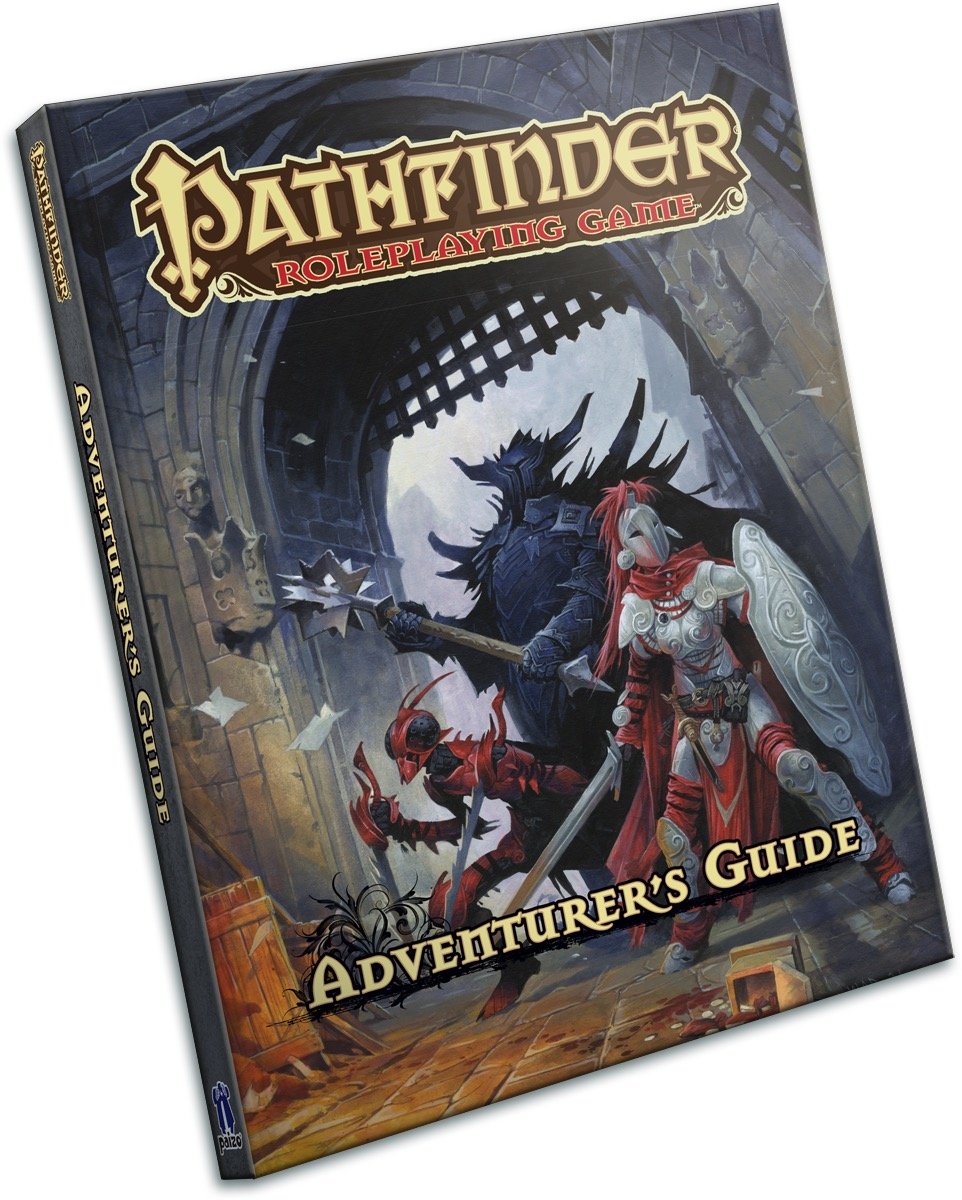Pathfinder: Adventurer’s Guide Adds Prestige, Class and Prestige Classes

The Adventurer’s Guide is full of Organizations, each with their own Prestige Classes, Spells, Items and more. Check them out!
There are a ton of organizations in Pathfinder. They’ve been cropping up in Adventure Paths and Pathfinder Society arcs alike. In many ways, these adventuring guilds kind of define a big part of the way that Pathfinder works. A lot of the quests and published content assumes your adventurers are going to throw in with a bunch of other people who feel the same way.
Otherwise…if you don’t feel the same way…
And joining up with like-minded people is a great way to create movement in your story, and tension between characters (without it blowing up into the bad kind of inter-party scuffle)–when players work for organizations who maybe want the adventurers to put the organization ahead of the party, it gets interesting. Even if their goals are aligned, there’s still a lot of potential for conflicting motivations and opportunities to make things interesting. And of course there are all the enemy organizations. We all know that there’s no foe more deadly than another PC, and if you’re going to build out a villain to threaten the party, you’ll want to take advantage of all the opportunities afforded to a PC
That’s where the Adventurer’s Guide comes in. It’s got 18 different organizations: the Al-Zabriti,the Aldori Swordlords, the Aspis Consortium, the Bellflower Network, the Council of Thieves, the Cyphermages, the Eagle Knights, the Gray Maidens, the Hellknights, the Houses of Perfection, the Lantern Bearers, the Magaambya, the Mammoth Lords, the Pathfinder Society, the Red Mantis, the Rivethun, the Silver Ravens, and the Storm Kindlers. Each one is as varied as the name, and comes with new class archetypes, at least one new prestige class (some have more), and a ton of class/organization specific items that you can use to build the character of your dreams.
You get a ton of content in this book–it’s 184 pages of character customization concepts. Seriously, if there’s one thing Pathfinder is good at, it’s giving you the options you’ll need. This can have its downsides, one of the big flaws of Pathfinder is that there are a ton of choices that are nice, and even mechanically interesting–but there are a number of options that have been proven to work best, and not all of these new options are as optimal. This isn’t game-breaking or anything–balance is an issue in all RPGs, really. But there’s a certain amount of comparison that inevitably crops up. Ultimately though, I think this book delivers a great experience. Let me take you through one of the Prestige Classes and show off some of the items in this book, so you can get a good idea of the kinds of stuff you’ll find waiting for you in: the Adventurer’s Guide.
For our example prestige class, let’s look at the Magaambyan Arcanist. They’re the prestige class for Wizards who want to both study magic and learn about nature–for in the Mwangi expanse, the Magaambyan are abulwark against savagery and evil of all types. And boy oh boy do they get a sweet prestige class out of the deal.
Starting at 1st level (and you can qualify for it with a good alignment, the feats Scholar and Spell Mastery, 5 ranks in Spellcraft, Knowledge (Arcana), and Knowledge (Nature), as well as being able to prepare 3rd-level Arcane Spells. So around 5th level if you really try hard. At which point you gain an aura of good, you also gain the ability to choose a spell from the Druid spell list and add it to one of your arcane lists, so you can cast all that nature magic. And then there’s a ton of synergy with Spell Mastery. You gain abilities like Superior Spell Mastery which lets you switch up the psells you have mastered for the day. Or there’s Intoned Recollection, which you pick up at 3rd level in this Prestige Class. Intoned Recollection lets you prepare a spell into a slot you’ve left open on purpose in the span of 1 minute. So if you need to swap spells out of combat, you’re covered. Spontaneous Spell Mastery lets you lose a prepped spell to instantly cast another spell of the same levelor lower that you have mastered,. You also get extra bonuses when opposing evil spellcasters and their SR, and at 10th level you both stop aging and gives you the ability to take one for the team in terms of spells. You can pull the negative effects of a spell onto yourself (you still make saves) but sparing your friends in the process.
All in all, this is a pretty neat class. It captures the feelings of the Magaambyans, as well as giving Wizards some powerful tools. Flexibility in prepared spells is amazing–it lets you be a little more free with your choice of mastered spells and attacks, etc.
Or, if you’re more the Rogue type, you could take the Dashing Thief (which is a swashbuckler archetype available to members of the Council of Theives which changes up your swashbuckling abilities and ties them a little more to thievery–letting you pick up rogue talents and regain panache from stealing items, etc. And last but not least, here’s a look at one of the spells available to the Eagle Knights who are all about freedom and Andorens, and Freedom. This one is called Detect Charm, it’s available to just about everyone who does spells, and it lets you see if someone’s under the effects of a charm, compulsion, dominate effect, etc. Always helpful for a band of renegade freedom fighters.
Anyway, this review has gone on long enough–suffice it to say, there’s a ton of cool stuff in this book. If you’re playing Pathfinder, it’s definitely worth picking up.
via Paizo
Pathfinder: Adventurer’s Guide – $39.99
Being an adventurer is a dangerous line of work, but the rewards are well worth the risk. The smartest adventurers never go it alone—they not only bring allies to help explore the dangerous reaches of the world, but also seek aid in the form of support, supplies, and secrets from powerful organizations. With such a group to serve as a guide, an adventuring party’s chances for success have never been better!
Pathfinder RPG Adventurer’s Guide presents several such organizations, each with its own suite of benefits and boons to grant those affiliated with it. Designed for the Pathfinder Roleplaying Game and drawing upon the rich traditions of the official Pathfinder campaign setting, this indispensable guide for adventurers provides a wealth of new character options for your game.
Pathfinder RPG Adventurer’s Guide includes:
Advertisement
-
Details on 18 different organizations that use adventurers to further their goals, including the law-enforcing Hellknights, the sinister assassins of the Red Mantis, and of course, the world-renowned Pathfinder Society itself.
-
A wealth of new player options, including feats, spells, magic items, prestige classes, archetypes, and new abilities and powers for a wide range of classes.
-
Rules and advice on how to incorporate the new options found in this book into your own game, whether it takes place in the official Pathfinder campaign setting or in a world of your own choice or design.
-
Notes on the movers and shakers of each organization—nonplayer characters who can come alive in your game as allies and advisors for the player characters.
-
AND MUCH, MUCH MORE!











